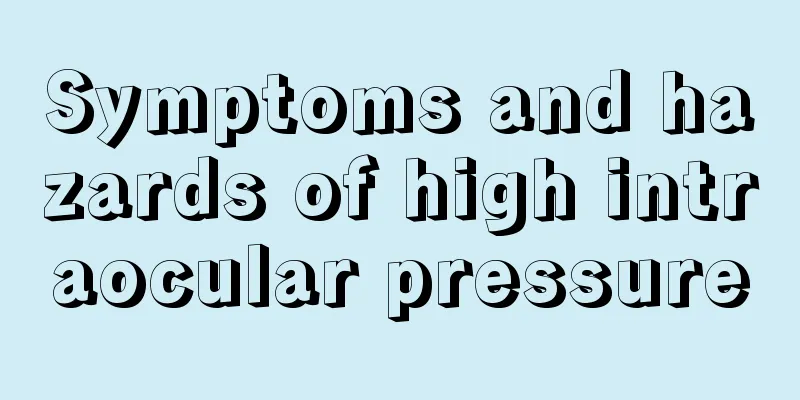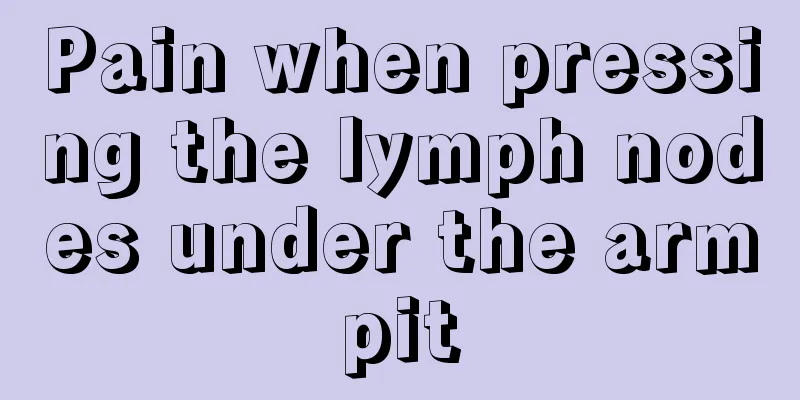Symptoms and hazards of high intraocular pressure

|
Let me explain to you some knowledge about intraocular pressure. What is intraocular pressure? Intraocular pressure is the pressure inside the eyeball. This pressure is different from the mental pressure we usually talk about. Intraocular pressure is a physical pressure. Such pressure can cause us great harm. Once you find that your intraocular pressure is high, you must seek medical attention in time. You can't delay it. Next, the editor will explain to you the symptoms and hazards of high intraocular pressure: The symptoms and dangers of high intraocular pressure include: High intraocular pressure is more common in glaucoma. The main symptom is a significant decrease in vision, accompanied by severe eye pain, headache, etc. Based on typical symptoms and combined with intraocular pressure measurement, high intraocular pressure can damage every structure in the eye. For example, the cornea is transparent, and high pressure may lead to edema, iris atrophy, lens opacity, etc. The most important damage is optic nerve atrophy. The human eyeball is equivalent to a light bulb, and the optic nerve is like an electric wire. If optic nerve cells die one by one, the corresponding field of vision will be impaired, and in severe cases, blindness will occur. The most common cause of high intraocular pressure is glaucoma, which is caused by obstruction of aqueous humor return due to various reasons. If the intraocular pressure rises to a certain level, it will begin to compress the optic nerve and cause it to atrophy. As the optic nerve gradually atrophies, the peripheral vision will first become invisible and then the vision will gradually deteriorate. Finally, the complete atrophy of the optic nerve will cause blindness. There are several reasons that may cause high intraocular pressure: Posture and food factors For a normal person, the intraocular pressure may rise by six mmHg when changing from a sitting position to a lying position. If you stand upside down, your intraocular pressure may rise by more than ten millimeters of mercury. Therefore, if glaucoma patients do yoga, we will advise them to avoid inverted movements as much as possible. In addition, drinking a large amount of fluid (such as 500CC) in a short period of time can increase intraocular pressure. Some medicines It can also cause the side effect of increased intraocular pressure, the most noteworthy of which is medicines containing steroids. Regardless of the route of administration, whether oral, skin application, nasal spray or eye drops, as long as it contains steroids, there is a chance of this side effect. Disease factors Eye diseases such as glaucoma, diabetes, cardiovascular disease, iridocyclitis, cataracts, and myopia can all cause high intraocular pressure, and trauma can also cause high intraocular pressure. Factors in daily life Staying in the dark for too long; looking down or reading for too long; not getting enough rest and overworking; overeating; seasonal changes, such as winter. } |
<<: How to measure 24-hour intraocular pressure
>>: How to remove black dental plaque
Recommend
How long can a person with hepatobiliary carcinoma live? Affected by many factors
Hepatocholangiocarcinoma is relatively rare, acco...
Can I take Panax notoginseng for cold and cough
Cold is a disease that people often suffer from, ...
How to treat pinworm disease
Children are a group that is not very good at exp...
What to do if prostate cancer recurs
What should I do if prostate cancer recurs? Prost...
What are the specific hazards of endometrial cancer
Friends who know about endometrial cancer are all...
The effect of protein on skin
Protein is an extremely important nutrient that i...
What are the symptoms of throat cyst
The problem of pharyngeal cysts cannot be ignored...
Two clinical manifestations of persistent atrial fibrillation
Persistent atrial fibrillation occurs in many mid...
What’s the matter with thin stools?
Each of us should pay more attention to observe a...
How to treat advanced lymphoma
The purpose of advanced lymphoma treatment is to ...
The efficacy and function of glabridin
The name of glabridin sounds like the name of a m...
What is the reason for severe arm pain when the body is fine
People often feel pain in their arms when the wea...
What causes testicular cancer
Today's society is developing rapidly, and pe...
What is a big heart disease and is it serious?
Under normal circumstances, our heart is about th...
How to straighten O-shaped legs
Some friends have bow legs due to their own bone ...









